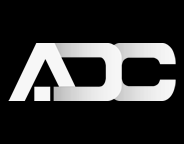
What’s the Best Platform to Release Your App on?
If you’re working on an app, one of the most important things to consider is where to sell it. Each store has a slightly different business model, so you’ll want to make sure you explore all the options to ensure maximum success! There are only three stores to sell your app: Google Play, App Store, or Windows Store. The fate of your app lies in the hands of the retailer, so choose wisely.
Trying to get rich?
The revenue generated at the Apple App Store to Google Play is at a ratio of 4 to 1. Apple does pay more for top developers who build their apps to be sold, not downloaded for free, so keep that in mind when deciding whether or not you want your app to be free. The Windows 10 Store is still small in terms of its revenue, but it allows apps to run simultaneously on a PC, tablet and smartphone, and more mediums mean more downloads.
Paid or Free?
The majority of Android apps from Google Play are free, so they rely on monetizing through advertising. Sometimes ads will even generate more revenue than selling your app upfront! Just be sure that you’re transparent with users about the ads and also be sensitive to their experience. Too many ads can be an easy turn-off for many users. Either way, make sure you decide on your strategy before launch, as updating the app with a new monetization plan will often lose users. As for Windows, there aren’t many ad networks which support Windows 10′s funky ad formats, so you’ll probably want to sell your app for a fixed price.
Want maximum downloads?
The Apple App Store can be challenging for new developers as it is more reluctant to promote the new guy and instead favors more established apps. If you want to generate a decent amount of downloads in a faster time frame, go for Android, which may be more likely to promote your app. You can also try to get featured on your store with services such as AppShout! when launching. Burst companies like AppBrain‘s are a great way to reach the top if you have the money to invest. The CPI (Cost Per Install) model seems to work best but if you’re not for the CPI model, take a look at AirBop.
That said, Google Play is starting to grow at a much faster rate and is starting to challenge Apple in the overall revenue category. As for Windows 10, developers are not flocking to it, probably due to some intrinsic problems but pioneer developers from every successful app market always reap great benefits. We’ll see if we can call the Windows Store a successful app market in the future, but for now it’s still in progress.
1. Key Features are Missing
There is nothing more painful than a key feature missing. Why? The users are disgruntled. They were promised that one extremely valuable feature and now they do not have it after waiting for months.
One recent example includes Microsoft’s To-Do – their version of Wunderlist. Microsoft purchased Wunderlist and explained to users that they would create similar functionality in To-Do. The Microsoft To-Do team took a year before releasing a primary feature that allowed users to create sub-tasks for lists.
Oftentimes apps perform many functions; however, there tend to be a few important features that differentiate an app from others. This is the number one sign that your app was partially built and will cost you more money.
2. Skipped the Discovery Phase
Did the project immediately shift into development after the idea was presented to the development team? The important step skipped here is the discovery phase. The discovery phase is a success-defining analysis in the mobile app development process where developers and other key stakeholders are able to perform their due diligence.
Sometimes teams opt-out and what happens next is all too common. The team makes slower progress without this phase because there are not clear needs, requirements, and timelines. The lack of due diligence leads to idling development teams, inefficient sprints, and ultimately a lower-rate of delivered story points.
3. You went with the Lowest Quote
Wow! The third quote for your app project came in 50% less than the first two quotes! Your ready to sign on the dotted line to begin your project, but wait, the tactic here is to merely start the project. Time and time again, we see lower-priced proposal quickly incur added costs as the true costs of developing a mobile app are realized during the production of your app. You may want to rethink which proposal to sign the dotted line on before pouring the celebratory champagne.
4. (Bonus) The App is not Available in App Stores by Launch Date
The marketing team allocated budget to launch campaigns. Google Keywords were targeted. Google Ads started. Press Releases were sent out. And now? The app is not in the Apple App Store or the Google Play Store! What happened?
Answer — Your app was partially built and therefore does not meet the minimum standards required by the app store for approval. Another reason could be, perhaps the project ran late and there was not enough time to complete the app store review process.
Ultimately, it is more than likely a combination of the previous three reasons that resulted in a partially built app that led to the delay in your App store launch.



